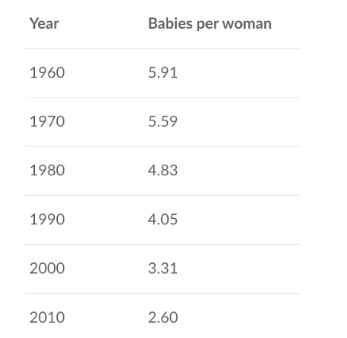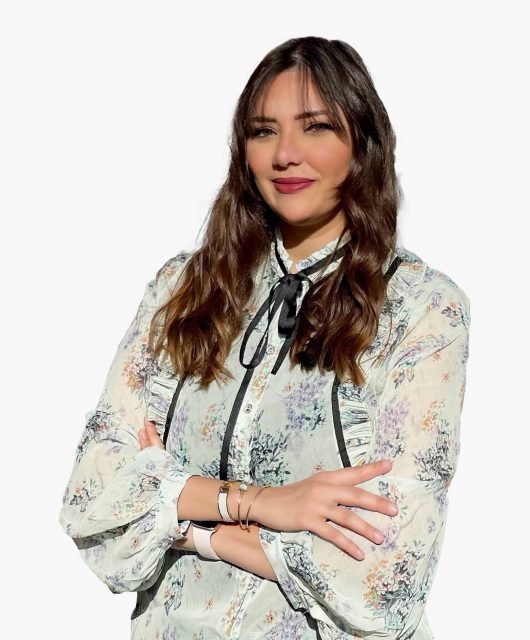Crystal Gazing Into 2023 With The Top 5 Consumer Trends, By D/A’s Faisal Khan
Let’s get on with some crystal gazing!
Do you need God to predict the future? Not always!
What is the next shape in the series?

How about the average number of babies per woman in 2030?

See, I told you, prediction is not difficult or at least not always! With the small and far from complex data-set it must have been quick and straightforward to identify a pattern and predict with a pretty high level of confidence. When this data-set is in millions, and with layers of complexity, the human brain falls short to process and identify patterns, but then that’s where technology comes into play, in this case predictive modeling using the power of Artificial Intelligence.
Predictive modeling is nothing but a mathematical process used to predict future events or outcomes by analyzing patterns in a given set of input data.
I often work on predicting the future on real time use cases, such as, which customer of yours is likely to lapse out or to predict your sales or to predict shopper buying behaviors or the consumers preference of a brand.
From Sila, D/As AI technology, I used the output from millions of data points from yesteryears to this morning, and based on the analysis, I share with you 5 consumer trends to watch out for in 2023 and what it means for brand in the Middle East Region:
- Sustainability will be a key choice driver: The interest in Sustainability is growing at an almost 100% year on year in the region, and in 2023 you can expect to see a direct correlation of your brand equity to that of your sustainability equity. That is why tracking your brand’s sustainability index becomes important, as that will impact purchase intention, a key metric of brand equity.
- Revenge shopping will continue: Revenge shopping is the overindulgence to overcome frustration. After two years of stay-at-home and a variety of restrictions, consumers had a lot of pent-up emotions, and now in post-Covid world you see a lot of revenge shopping as a means of making up for lost time. This trend will continue in 2023, this opens up not only opportunities for luxury brands but also premiumisation and upselling opportunities across product and service brands.
- A phygital shopping experience is going to be the sweet-spot: The norm has always been to shop from stores and malls, the pandemic changed that and got us consumers habituated to online shopping. Now things are back to normal, the consumer is sitting on the fence between going to the mall and shopping online. This consumer tension is addressed by phygital experiences and ‘6th Street’ in this region takes lead with the first phygital store in Dubai, can we expect to have Amazon Go in the region soon?
- Growing need for non-transactional relationships with brands: your category takes 0.1% of the consumer’s mind space, your brand maybe 0.01% mind space. There is a lot, like A LOT, in the consumer’s life beyond what you sell. If your consumer loves music or e-gaming, and your category has nothing to do with these, find a way to weave them in your marketing narrative. This also means spending less time understanding what consumers like about your category and more time on understanding what they love in and about life. An audience-first strategy!
- Growing social sensitivity: Nike stood by Colin Kaepernick for him to “believe is something”, Adidas cut ties with Kayne saying they do not tolerate antisemitism and any other sort of hate speech. Consumers are getting sensitive about social issues and increasingly believe brands need to make their social stance clear. This isn’t about the soul of a brand but the spine, and while this right now is more prevalent in other regions, it is creeping into our region. Brands can no longer sit on the fence, and are expected to have a point of view, this makes real-time consumer monitoring for brands imperative.
Looking forward to an exciting 2023, where consumers in the region are more evolved, mature and with higher levels of EQ!





